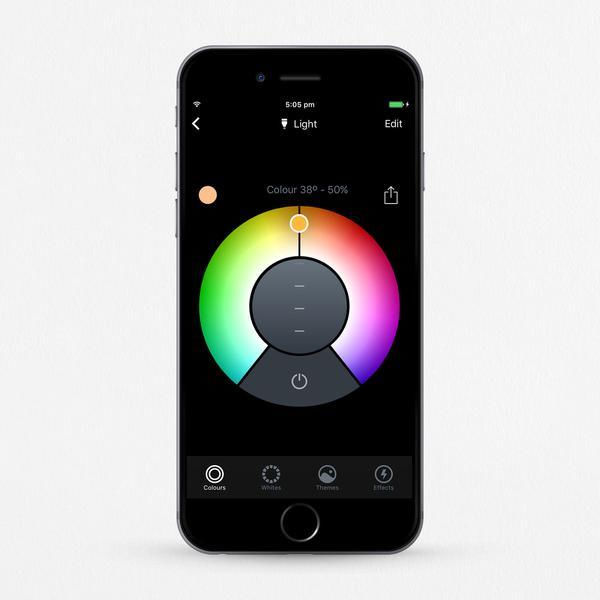GU10 is a very common spotlight fitting in UK homes, but do check to see if your spotlights are low-voltage or mains voltage before buying. That’s because GU10 and MR16 spotlights are both 50mm in diameter, so it’s easy to confuse them. For those who have flush-mounted spotlights rather than pendants and lampshades, the introduction of the GU10 is good news for LIFX fans.
LIFX GU10: Price
However, the not so good news is that each bulb is expensive. Just as expensive as the bigger, brighter A60 in fact. The trouble with spotlights is that you’re probably going to need more than one. To light an average-size room you’ll probably need between 6 and 12, which means the cost quickly becomes prohibitive. The only multipack option available currently contains two bulbs and costs £99.99, saving you £20. But if you need six, that’s £300 and we’d like to see more of a saving if you’re buying in bulk. You can’t really buy a couple and leave the rest as standard LED or halogen bulbs – at least if all your spots turn on and off via a single switch – because then you lose the ability to turn the LIFX lamps on and off via the app. Technically you can still do this, but you’d have to leave the other lights on all the time. In practice you’d want to switch them off to save money, but that would cut power to the LIFX bulbs too. Also check out our roundup of the best smart lights.
LIFX GU10: Features and specs
It may cost more to miniaturise the components and allow Wi-Fi to be integrated into a much smaller lamp, but LIFX’s GU10 is still considerably taller than a standard GU10 bulb (73mm to be precise).
That means it may not fit into an enclosed fitting. I have two fire-proof GU10 holders in my kitchen and the LIFX sticks out by about 25mm. To be fair, LIFX says you shouldn’t install the lamps into enclosed fittings, so you might have the additional cost and hassle of replacing existing fittings. And really that should be done by a qualified electrician. The lamp is rated at 400 lumens, and that’s bright for a GU10. Standard white LED versions tend to emit around 250-350 lumens. However, bear in mind that the rating only applies for white light at 100 percent brightness. When you select other colours, brightness will be dimmer. And even 400 lumens is much less than half the 1100-lumen output of the LIFX A60. So compared on light output vs price, the GU10 represents much poorer value. If you do have the option to install new light fittings, then consider the Downlight which costs £10 more, but is twice as bright. The good news is that light and colour quality isn’t compromised due to the size restrictions of the GU10 form factor. Where some colour bulbs struggle with yellows and pinks, the LIFX GU10 has no such problems: each of the shades on the colour wheel is just as vibrant and pleasing as the A60 and other LIFX lamps. If you want white light, this uses a separate set of LEDs and you can adjust the colour temperature via the app from 2500-9000K. That covers the warmest – almost orange – shades through to the coolest bluish hues. At full brightness it consumes 6W, which means it’s roughly as power-efficient as 3W LED lamps that output only 230 lumens: the addition of Wi-Fi doesn’t use much extra electricity.
App
For those unfamiliar with LIFX, the app is superb. As well as offering a clean, intuitive interface for controlling colour and brightness of a single light, you can group multiple lights and control them easily. Note that the GU10 doesn’t support the Day & Dusk feature of the LIFX Mini.
Should I buy the LIFX GU10?
If you already have other LIFX bulbs, the choice is easier as it makes no sense to have multiple apps to control your lights. But if these will be your first smart lights, then know that the Philips Hue GU10 bulbs can costs as little as £42 if you hunt around. That’s not a huge saving over the LIFX version when bought as a two-pack, and know that you need the Hue Bridge or Samsung SmartThings Hub for them to work. LIFX bulbs don’t need a hub: they talk directly to your router. Jim has been testing and reviewing products for over 20 years. His main beats include VPN services and antivirus. He also covers smart home tech, mesh Wi-Fi and electric bikes.

